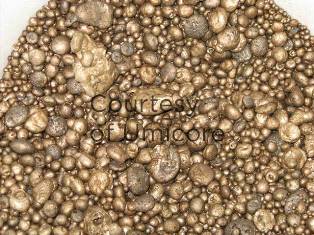
Tesla's Closed Loop Battery Recycling Program
By Kurt Kelty, Director of Energy Storage Systems
Tesla Motors
January 26, 2011
As we work to lessen global dependence on petroleum-based transportation and drive down the cost of electric vehicles, we are committed to instituting a closed loop battery recycling system. A closed loop of material use involves manufacturing of battery cells, assembly into battery packs, then vehicles, and finally, recycling into raw materials for future use.
As more electric vehicles hit the road, the demand for battery recycling will increase. The automotive industry faced the same situation twenty years ago, for recycling lead-acid 12-volt starter batteries used in gasoline-powered vehicles. With supportive regulations and convenient collection, today the recycling process is profitable. Once reclaimed, the lead acid batteries are crushed into coin-sized pieces and separated into component parts. Plastics are sent to re-processors to be made into new products, and purified lead is sent back to battery manufacturers to be reused – a closed loop system. Recycling of lead-acid batteries is now one of the most successful recycling stories of any industry. The EPA estimates that over 90 percent of lead-acid batteries are recycled, and a typical battery contains 60-80 percent recycled materials.
At Tesla we have been refining our recycling program for years. Before sending our battery packs to be recycled we can reuse about 10% of the battery pack (by weight), e.g. the battery case and some electronic components. In North America we work with Kinsbursky Brothers [ http://www.kinsbursky.com/ ] to recycle about 60 percent of the battery pack. In Europe, we recently started working with Umicore [ http://www.umicore.com/ ], and now that we are selling cars in Japan and the Asia Pacific region, we will soon have news about recycling in Asia.
Let’s focus on Tesla’s recycling process with Umicore, which is the first time we’ve been able to use a closed loop recycling system.
Umicore’s factory plants are able to recycle our batteries into completely reusable materials and substantially reduce the carbon footprint of manufacturing Lithium-ion batteries.
The Umicore battery recycling technology is able to save at least 70 percent on CO2 emissions at the recovery and refining of these valuable metals. It does this by creating “products” and “byproducts,” rather than following a mechanical separation process.
“Product” is comprised of an alloy that’s refined into cobalt, nickel and other metals. Traditionally, cobalt is used as a metallic powder to harden tools, or a pigment for ceramics. Umicore has developed a process whereby the cobalt (the highest value material in our batteries) is used to make up LCO (lithium cobalt oxide) that can be resold to battery manufacturers. This is not only an attractive process for Tesla from an environmental aspect, but it also provides a high margin of return. Umicore is one of the largest suppliers of LCO to battery manufacturers.

The “byproduct” produced together with the alloy fraction is an environment-friendly slag where the lithium contained in EV batteries ends up. This “byproduct” containing lithium is valorized in different applications, one being construction material. Nearly 5 percent of the global man-made CO2 emissions worldwide are produced by cement manufacturing. Replacing the raw materials with secondary raw materials, and avoiding thermal processing, significantly reduces the CO2 emission and non-renewable resources consumption. With the “byproduct,” the construction industry is able to use this secondary raw material as a more environmentally-conscious alternative.

The only other emissions from the recycling process are CO2, water vapor, and dust. The dust makes up about 1 percent of the total output, and goes to protected landfill. In an effort to reuse every possible part of the process, the Umicore facility even sells the electricity created from an on-site combined natural gas generation plant to the copper mine next door, which uses the heat in its smelters.
Working with Umicore has allowed us to completely recycle the Roadster battery packs profitably, without special financial incentives necessary to promote recycling (as opposed to the lithium manganese or lithium iron phosphate chemistries used in the electric vehicles just hitting the road now). Soon, we hope to have the ability to recycle our batteries back into their raw materials. Specifically, the metals can be reused in the battery cells and any plastics can be reclaimed and used to mold new plastic parts for our vehicles. The technology to enable this is available today – and it’s profitable! We already reuse cobalt in the batteries. The overall closed loop recycling system becomes possible, and much more efficient, once the quantities rise to a level to justify the investment for recycling of the other components – especially the plastic.
We take great pride in the ability to recycle our batteries and with Umicore we are one very large step closer to a closed loop of material use with our vehicles.
Copyright 2011